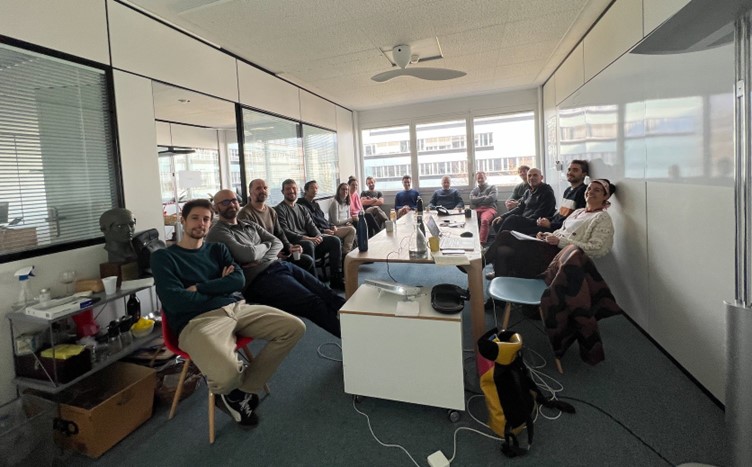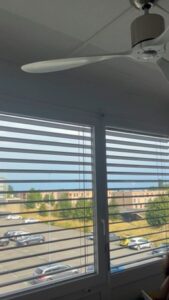Ultra-quiet fan: a real alternative to air conditioning
At a time when air conditioning is becoming almost a reflex response to heatwaves, it's worth remembering a simple but often overlooked truth: all air conditioners are, above all, fans. Professor Stefano Schiavon from the University of California, Berkeley, points out. However, an air conditioner often exceeds 400 W, whereas a fan consumes between 3 and 10 W to cool a person, not to mention its environmental impact.
sobriety that refreshes
An air conditioner combines a fan with a refrigeration machine - comprising a compressor, a heat pump, electronic components and refrigerant fluids. This complexity has a cost, both financial (from CHF 1,000 to over CHF 6,000) and ecological, with up to 24 kg of CO₂/m² generated during its manufacture.
The fan, on the other hand, offers a much more direct approach: it cools people, not walls, efficiently, quickly and at low cost.
A solution seen as far-fetched?
In many hot countries, the fan is ubiquitous, almost a social symbol. And yet, in our regions, proposing a fan as a solution to the heat is still met with smiles. An engineer or an expert from the EPFL who extols its virtues is sometimes seen as an amateur.
And yet... At Estia, at the Unité du Développement Durable Vaud, or in Doctor Keil's medical practice in Montreux, there is no air conditioning.
And feedback from users has been very positive, even in the middle of a heatwave. It's all down to simple gestures:
- Close the blinds before the sun gets too hot inside.
- Ventilate at night by opening the transom windows to let in the fresh air.
- Use an individual fanif required.
- Adapt your clothing depending on temperature.
Result: Even in the height of summer, the coolness is maintained until 11am, and the fans are sufficient to manage the heat peaks in the afternoon.
The secret of a good fan
A well-designed fan can reduce the perceived temperature by 3 to 5°C, depending on the speed used. But for optimum efficiency, it's important to choose the right model:
- Noise level below 35 dB at low speed.
- Low power consumption between 3 and 30 W for a ceiling fan, and 1 to 10 W for a floor fan.
- No stroboscopic effect with light.
- Laminar air flowthat doesn't dry out the eyes.
These types of fans, which were rare just a few years ago, are now becoming more and more accessible. At Estia, a simple mini USB fan has been successfully tested, without the need for a ceiling fan.
Refreshing people, not walls!
Air conditioning or fan?
The real question is: Are we looking to refresh a space or simply a person?
In countries like the United States, where air conditioning is ubiquitous, summer complaints mainly concern... excessive cold. Ironic, isn't it?
What's more, air conditioning often confines you in enclosed spaces, encouraging the proliferation of germs, an effect similar to that of winter.
A ventilated future
In the face of climate change, our perception of comfort has to change. The good news? Even in the IPCC's most pessimistic climate scenarios for 2060, a properly used fan is enough to maintain thermal comfort in an intelligently designed building, in accordance with standards (such as SIA 180:2014).
Ceiling fans are already included in the EPIQR+ database, a valuable tool for renovation. All that remains is to integrate them into our renovation projects.
In conclusion
Before rushing into a costly, energy-consuming solution like air conditioning, why not try a fan? So simple in appearance, it could well become one of the greatest innovations of our time in terms of thermal comfort.


